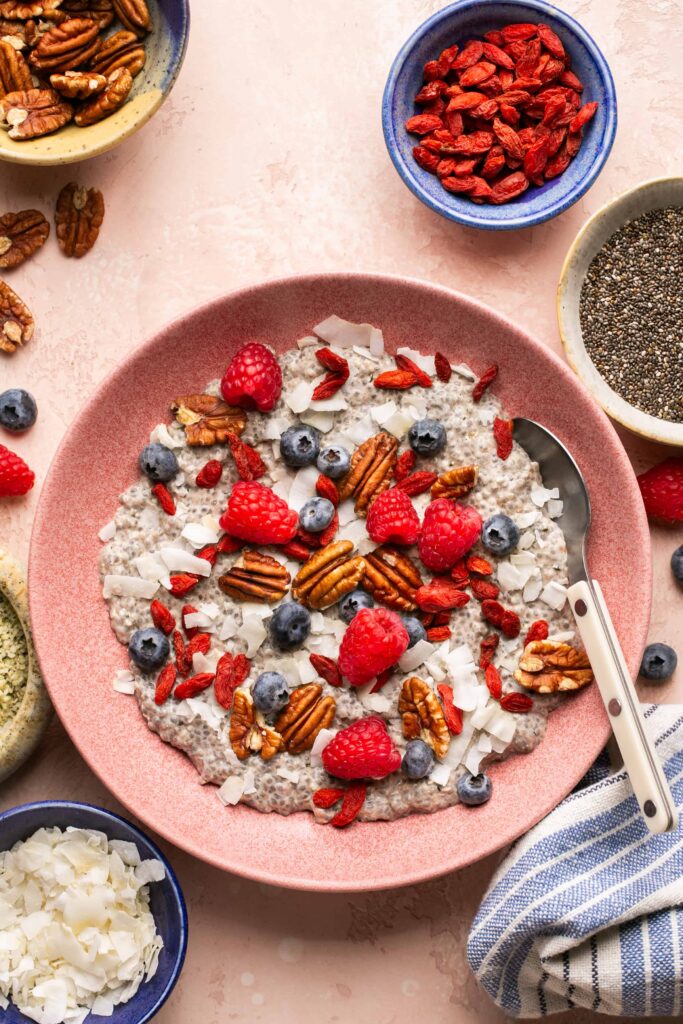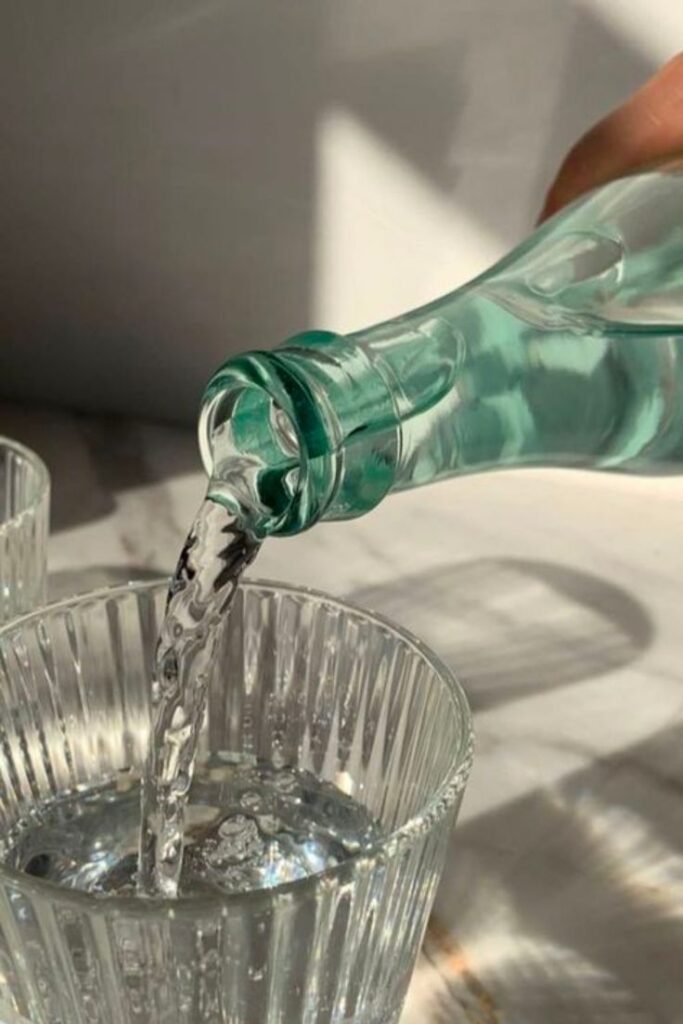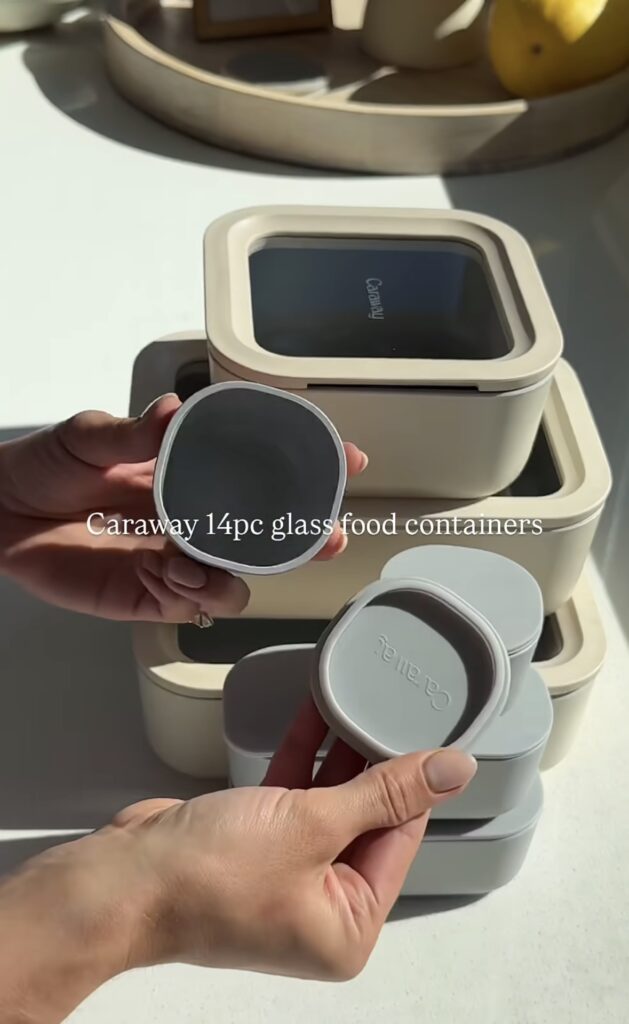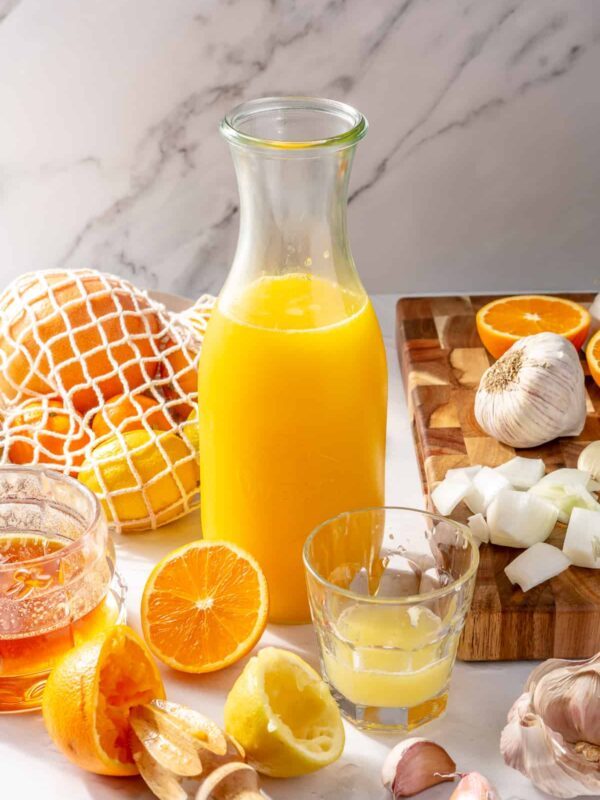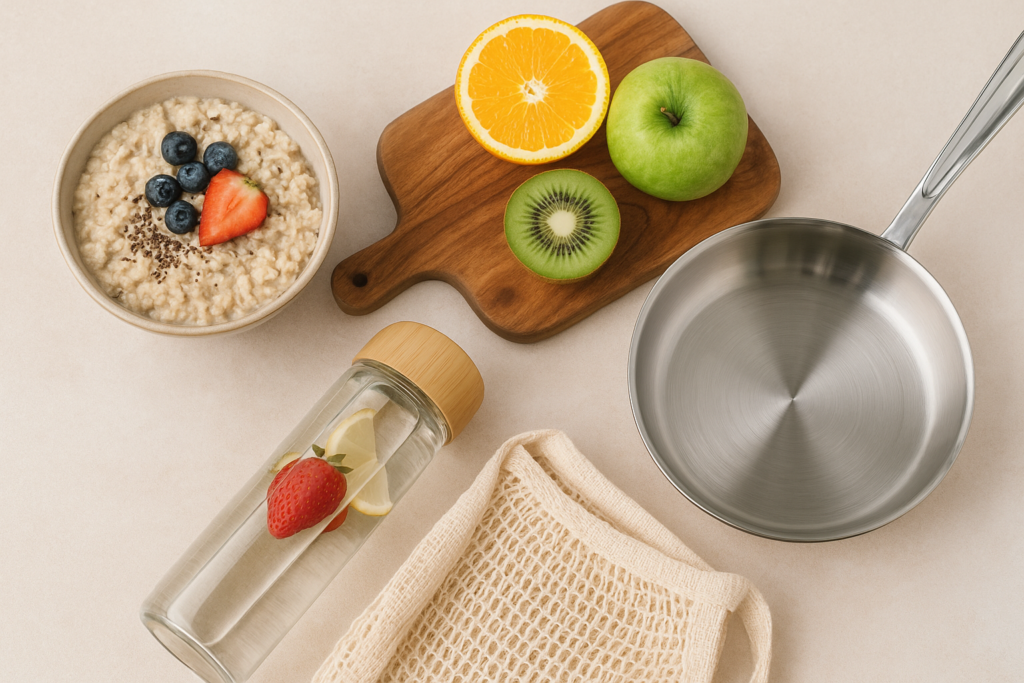
From cookware to clothing, food packaging, and even our drinking water—PFAS (per- and polyfluoroalkyl substances) show up everywhere. Microplastics and “forever chemicals” feel almost impossible to escape. And because these synthetic chemicals don’t break down, they build up in our bodies over time. Studies show that about 97% of Americans have these toxic chemicals in their blood, and they can take decades to leave the body (Source: NIEHS). PFAS are linked to hormone disruption, weakened immunity, and long-term health risks (wild, I know!), which is why I’ve been digging into simple, practical ways to remove PFAS from the body and reduce PFAS exposure (Sources: US EPA, ScienceDirect).
Think of this post as your 101 breakdown: what PFAS are, where they’re hiding in everyday life, and three easy ways to support your body’s natural detox pathways—plus some prevention swaps to help lower your exposure moving forward.
What Are PFAS?
If you’re not familiar, PFAS are a group of man-made, synthetic chemicals created for their water- and stain-resistant properties. They’ve been used for decades in things like:
- Cookware (nonstick pans)
- Clothing & textiles (rain gear, stain-resistant fabrics, and even activewear)
- Food packaging (fast food/takeout containers, microwave popcorn bags, candy wrappers)
- Cosmetics & personal care (waterproof makeup, lotions)
- Household items (cleaning sprays, carpeting, upholstery)
Because they don’t break down, PFAS are often called “forever chemicals.” Over time, they accumulate in soil, water, food, and—most concerning—in our own bodies, especially with prolonged contact (I have a whole post on Why I Try To Wear Non-Toxic Activewear HERE).
Also, studies link PFAS exposure to a wide range of health issues, including hormone disruption, fertility challenges, weakened immune function, thyroid imbalance, and increased risk of certain cancers. These are just some of the PFAS health risks experts are continuing to study.
3 Easy Ways to Help Your Body Remove PFAS
While there’s no overnight “detox”, supporting your body’s natural elimination systems can make a real difference. I totally get how hard it is to avoid toxins in today’s world, but there are a few evidence-backed, approachable ways to help reduce PFAS in the body:
1. Increase Fiber—Especially Soluble Fiber
Fiber does more than support digestion—it can actually bind to certain toxins, including PFAS, in the gut and help carry them out through stool. Gel-forming soluble fibers like oats, barley, beans, psyllium, and chia seeds are especially effective. Think of fiber as your body’s natural sweep—it helps prevent PFAS and other chemicals from being reabsorbed. (Sources: ScienceDirect, EH Journal)
Simple tip: Start your day with overnight oats, blend chia or flax seeds into your smoothies, or use beans and lentils for easy fiber boosts and a protein source in meals.
2. Stay Hydrated & Support Kidney Function
Your kidneys are crucial for eliminating toxins—and PFAS are primarily excreted through urine. Staying hydrated helps them work efficiently. And pairing water intake with potassium-rich foods (like bananas, sweet potatoes, leafy greens) also supports electrolyte balance and kidney health. (Source: CDC: ASTDR)
Simple tip: Keep a reusable glass or stainless-steel water bottle nearby as a reminder to sip throughout the day.
3. Support Your Liver Detox Pathways
Your liver plays a central role in processing toxins, including PFAS. While it may not fully “filter them out,” supporting liver health can help minimize their impact. Focus on foods rich in antioxidants (like berries, citrus, leafy greens), cruciferous veggies (broccoli, cauliflower, Brussels sprouts), and sulforaphane-rich choices. Also, limiting alcohol and staying active gives your liver the best chance to do its job. (Source: NIEHS)
Simple tip: Aim to fill half your plate with colorful plant-based foods at meals—your liver will thank you.
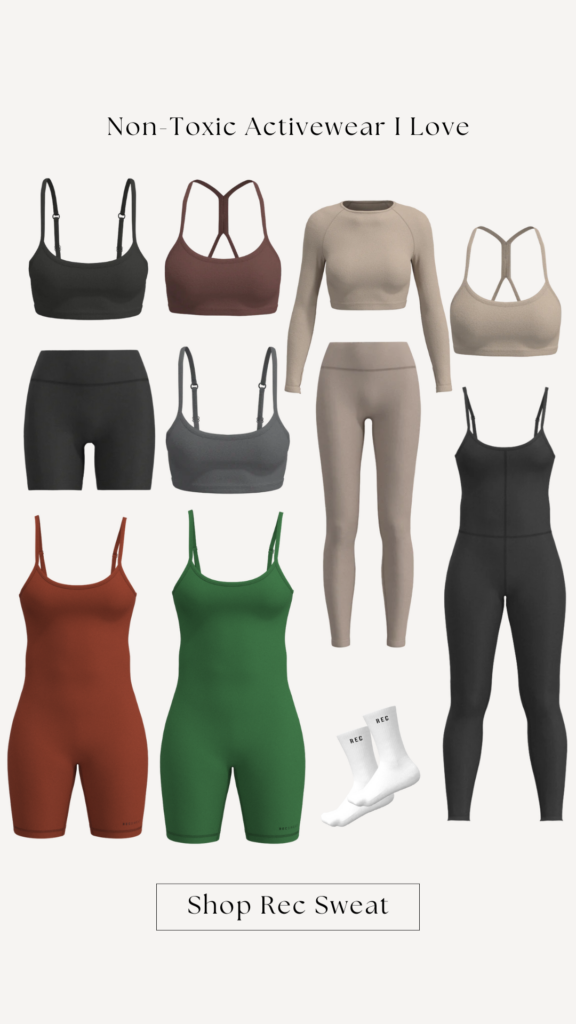
Everyday Prevention: How to Lower PFAS Exposure
Reducing the amount of new PFAS we’re exposed to is just as important as supporting removal. Here are a few simple, non-toxic lifestyle swaps that can help the cause:
- Ditch nonstick cookware → opt for stainless steel, ceramic, or cast iron (I like Made In, Caraway and Staub—shop all of these in my Amazon Storefront)
- Filter your drinking water with a system designed to reduce PFAS (look for activated carbon or reverse osmosis).
- Choose PFAS-free personal care products — thankfully, more clean makeup and skincare brands are popping up every year.
- Avoid stain-resistant sprays & fabrics (think sofas, rugs, outdoor gear).
- Limit foods packaged in grease-resistant wrappers (like microwave popcorn bags and takeout containers), since those often contain PFAS.
While these changes don’t remove PFAS already in your body, they lower your overall exposure so your natural detox systems aren’t constantly overloaded. Living a lower-toxin lifestyle means your body has more breathing room to process what’s already there. The EWG (Environmental Working Group) site is a great resource for finding clean, PFAS-free brands across these areas, and I love Recreation Sweat for non-toxic activewear.
The Bottom Line
PFAS are everywhere, but that doesn’t mean we’re helpless. By focusing on simple nutrition strategies (fiber, hydration, liver support) and making mindful everyday swaps to reduce exposure, you can help your body manage and minimize the impact of these forever chemicals.
It’s not about eliminating every source—because that’s nearly impossible—it’s about taking small, sustainable steps to lower your load and give your body the best chance to thrive. Hope this helps!
Sources:
- Perfluoroalkyl and Polyfluoroalkyl Substances (PFAS) — NIEHS (National Institute of Environmental Health Services)
- Our Current Understanding of the Human Health and Environmental Risks of PFAS — US EPA (United States Environmental Protection Agency)
- PFAS health effects database: Protocol for a systematic evidence map (ScienceDirect)
- An oat fiber intervention for reducing PFAS body burden: A pilot study in male C57Bl/6 J mice (ScienceDirect)
- Per- and poly-fluoroalkyl substances (PFAS) in circulation in a Canadian population: their association with serum-liver enzyme biomarkers and piloting a novel method to reduce serum-PFAS — EH Journal (Environmental Health Journal — BioMed Central)
- Preventing PFAS Exposure — CDC: ASTDR (Center for Disease Control: Agency for Toxic Substances and Disease Registry)

